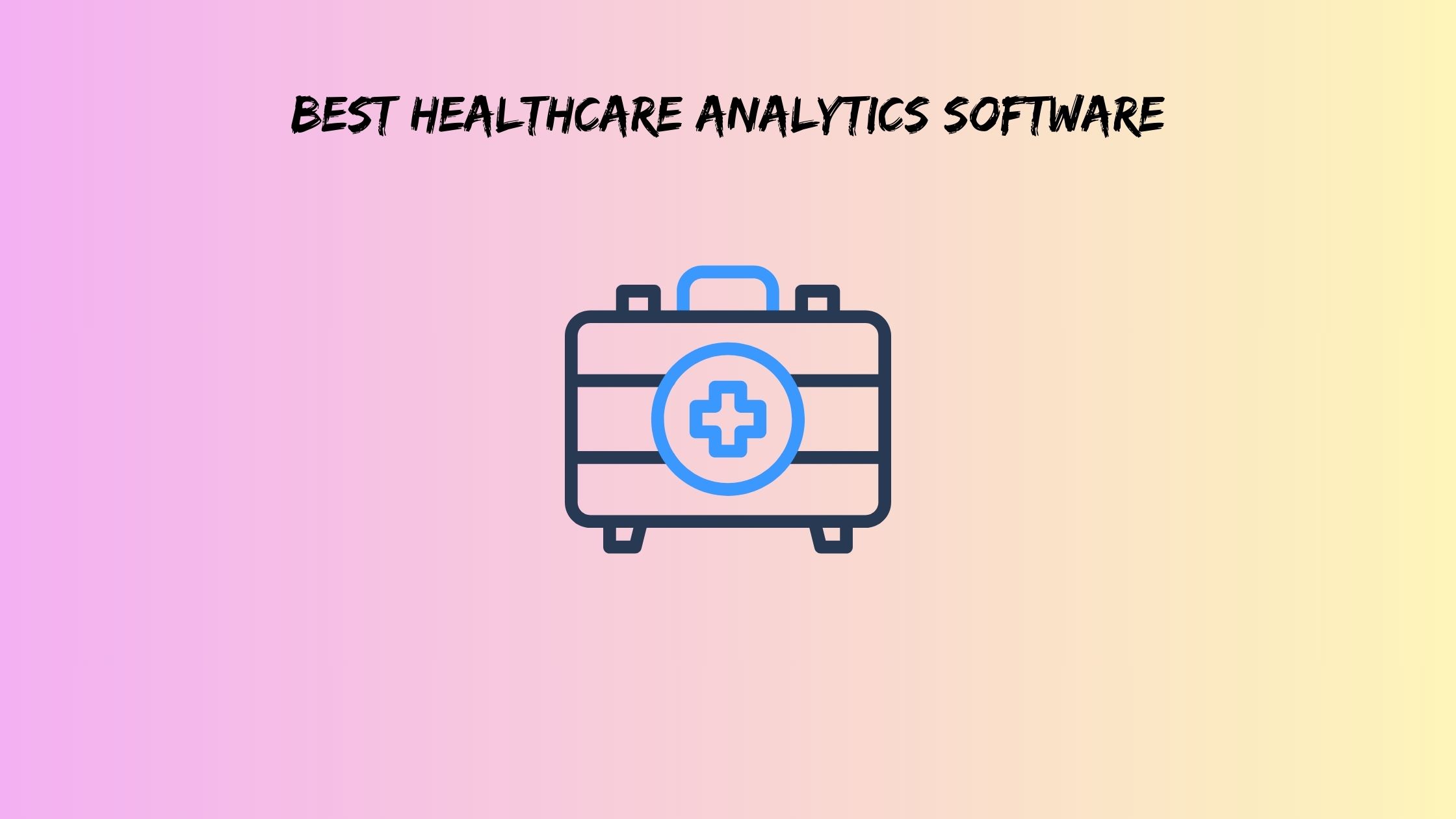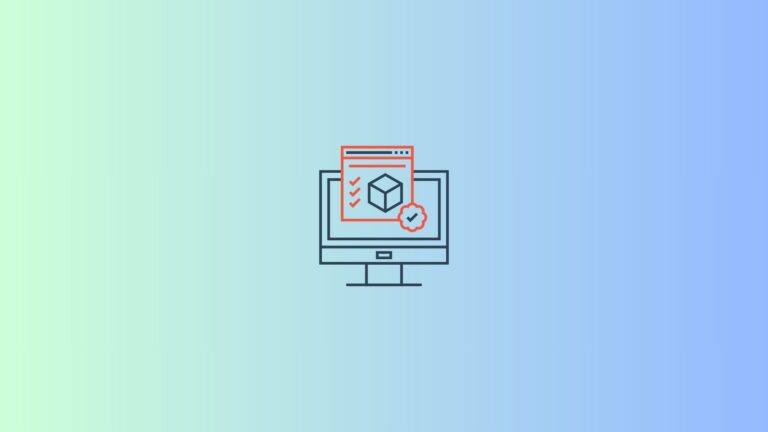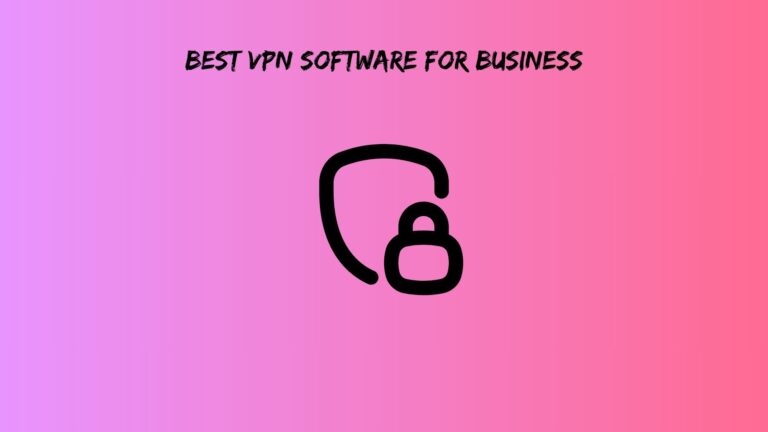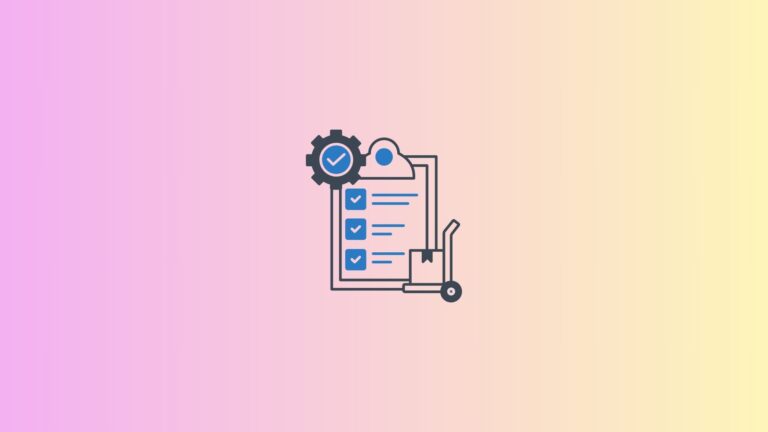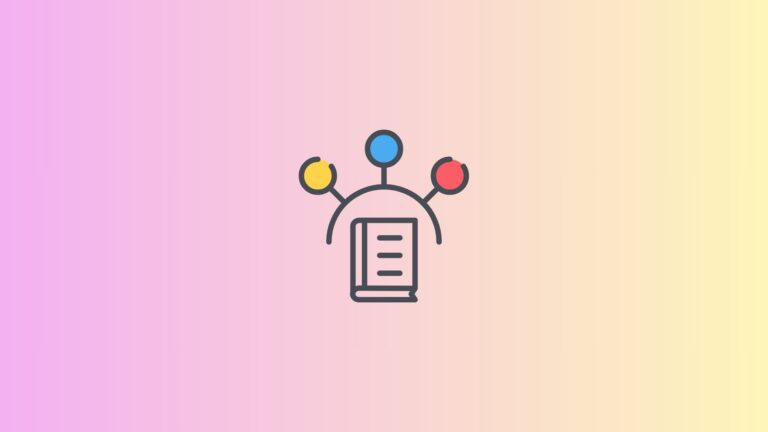Best Healthcare Analytics Software for Hospitals, Clinics & Providers
Healthcare generates enough data every day to fill 1.2 million DVDs. Yet most hospitals still make million-dollar decisions based on gut feelings and outdated spreadsheets. That’s like trying to perform heart surgery with a butter knife.
The truth? Healthcare analytics software isn’t just nice to have anymore. With 60% of payments now tied to patient outcomes and new CMS transparency rules hitting hard in 2025, hospitals without proper analytics are essentially flying blind in a thunderstorm.
This guide breaks down the 10 best healthcare analytics software platforms that actually deliver results. No fluff, no vendor marketing speak, just real-world insights from someone who’s seen too many $500K analytics projects crash and burn.
Why Healthcare Analytics Software Became Mission-Critical in 2025
Remember when hospitals could coast on fee-for-service payments? Those days are deadlier than a Windows 95 computer. Today’s healthcare landscape demands precision, speed, and accountability that only robust analytics can provide.
Value-based care contracts now represent the majority of healthcare payments. Consequently, providers who can’t prove their worth with hard data get left behind faster than a dial-up modem. Moreover, the 21st Century Cures Act keeps tightening the screws on data transparency, making compliance a moving target that requires constant monitoring.
Furthermore, artificial intelligence has transformed from a buzzword into a practical necessity. Modern healthcare analytics platforms use machine learning to predict everything from patient readmissions to equipment failures, typically reducing operational costs by 23% within the first year.
The kicker? Interoperability requirements mean your analytics platform needs to play nicely with existing EHR systems. Otherwise, you’re stuck with expensive data silos that create more problems than they solve.
Also read: best document signing software
What Separates Great Healthcare Analytics Software from Expensive Mistakes
Shopping for healthcare analytics software feels like buying a car from a salesperson who only speaks in technical jargon. Everyone claims to be the best, but most platforms fall short when reality hits.
Here’s what actually matters when evaluating these platforms:
Clinical Impact Score measures how quickly the software improves patient outcomes. The best platforms show measurable results within 90 days, not 18 months of “implementation phases.”
Implementation Velocity separates the winners from the pretenders. If deployment takes longer than your average residency program, something’s wrong. Top-tier platforms get you generating insights within 30-60 days.
Specialization Depth means the difference between generic business intelligence and healthcare-specific solutions. You want platforms built by people who understand the difference between ICD-10 codes and ZIP codes.
ROI Acceleration should be measurable and fast. The best healthcare analytics software pays for itself within 12 months through improved efficiency and better decision-making.
Additionally, integration capabilities determine whether your new platform becomes a productivity booster or an expensive digital paperweight.
The 10 Best Healthcare Analytics Software Platforms (Tested in Real-World Settings)
1. Alteryx
Alteryx treats healthcare analytics like LEGO blocks for adults. Clinical teams can build complex predictive models without bothering the IT department every five minutes.
This platform shines brightest when hospitals need to democratize analytics across departments. Nurses can predict readmission risks, while administrators optimize staffing schedules using the same visual workflow builder. Implementation typically takes 45 days, which beats most competitors by months.
The real magic happens with Alteryx’s predictive modeling capabilities. Hospitals using this platform report 31% fewer unexpected readmissions and 18% better resource allocation. It’s particularly valuable for mid-to-large hospitals that want to empower clinical teams without requiring advanced degrees in data science.
2. Veradigm
Formerly known as Allscripts, Veradigm takes a different approach by embedding analytics directly into electronic health records. This eliminates the data migration headaches that plague most healthcare analytics projects.
For practices already using Veradigm’s EHR system, deployment is practically instantaneous. The platform excels at population health management and identifying care gaps before they become expensive problems. Clinical workflows remain unchanged, which dramatically reduces training costs and user resistance.
However, this tight integration comes with limitations. Organizations using different EHR systems face significant switching costs, making Veradigm best suited for existing customers rather than new market entrants.
3. Arcadia
Arcadia built its reputation solving one specific problem: helping accountable care organizations succeed in value-based contracts. This laser focus shows in every feature and capability.
The platform excels at risk stratification, turning patient populations into manageable segments based on health risks and intervention opportunities. Quality measure tracking happens automatically, which saves countless hours during CMS reporting periods. KLAS has ranked Arcadia #1 for population health analytics five consecutive years, and that consistency speaks volumes.
Implementation requires 60-90 days but includes structured onboarding that actually works. Healthcare systems managing ACO contracts or preparing for value-based care transitions find this platform indispensable.
4. Improvado
Most healthcare analytics platforms ignore marketing completely, treating patient acquisition like an afterthought. Improvado flips this script by focusing specifically on HIPAA-compliant marketing intelligence.
This platform answers the questions that keep healthcare marketers awake at night: Which campaigns actually drive quality patients? What’s the true cost per acquisition across different channels? How do marketing investments translate into long-term patient value?
Setup takes about 30 days, after which healthcare organizations gain unprecedented visibility into marketing ROI. The AI-powered attribution modeling helps identify which touchpoints drive conversions, allowing for smarter budget allocation. Growing healthcare organizations find this platform particularly valuable for optimizing patient acquisition costs.
5. Optum
Optum brings the heavyweight championship belt to healthcare analytics. With access to claims data from over 300 million patients, this platform offers insights that smaller competitors simply can’t match.
The comprehensive population health ecosystem covers everything from provider network optimization to clinical pathway analysis. Large health systems appreciate the depth of data and analytical capabilities, particularly for complex population health initiatives.
Enterprise deployment typically takes 6-12 months, which reflects both the platform’s complexity and comprehensive nature. The investment pays off for organizations managing large patient populations or complex payer relationships, though smaller practices might find the platform overwhelming.
6. Cotiviti
While others focus on clinical outcomes, Cotiviti obsesses over the business side of healthcare. This platform excels at payment integrity and revenue optimization, turning the often-painful revenue cycle into a competitive advantage.
Real-time payment accuracy monitoring catches billing errors before they become denials. Claims processing efficiency improves through automated workflows that identify and resolve issues faster than human review processes. The 90-day integration timeline includes comprehensive training on revenue cycle optimization techniques.
Healthcare organizations struggling with denial rates or payment delays find this platform particularly valuable. The ROI calculations are straightforward: reduced denials plus faster payments equals better cash flow.
7. Olio
Olio focuses on point-of-care analytics, providing clinical decision support exactly when and where providers need it most. This platform transforms evidence-based medicine from a theoretical concept to a practical reality.
Real-time clinical alerts integrate seamlessly with existing workflows, providing treatment recommendations based on current best practices and patient-specific factors. Clinical pathway optimization helps standardize care while maintaining flexibility for complex cases. The 30-day integration timeline gets providers access to decision support tools quickly.
Clinical teams seeking immediate, actionable insights find this platform invaluable. The focus on evidence-based recommendations helps improve outcomes while reducing practice variation.
8. Qrvey
Qrvey takes a different approach by providing white-label analytics capabilities for healthcare software companies and organizations requiring custom solutions. This platform excels when standard dashboards don’t fit unique requirements.
The no-code visual analytics builder includes healthcare-specific templates that accelerate development. Dashboard deployment typically takes 14 days, which beats custom development by months. Healthcare software vendors particularly appreciate the embedded analytics capabilities that enhance their existing applications.
Organizations with unique reporting requirements or software companies serving healthcare markets find this platform’s flexibility compelling. The ability to create custom analytics experiences without extensive development resources opens possibilities that traditional platforms can’t match.
9. Innovaccer
Healthcare’s fragmented data landscape creates more silos than a Midwestern farm. Innovaccer attacks this problem head-on with a unified data platform that connects disparate systems into a coherent whole.
The FHIR-native architecture includes over 500 pre-built connectors, eliminating most integration headaches. 360-degree patient views combine clinical, financial, and operational data into actionable insights. The 45-60 day data unification process creates a single source of truth for organizational decision-making.
Health systems struggling with data interoperability find this platform transformative. The ability to see complete patient journeys across multiple systems enables care coordination that was previously impossible.
10. SAS
SAS brings four decades of statistical computing expertise to healthcare analytics. This platform excels when organizations need sophisticated predictive modeling and advanced statistical analysis capabilities.
Clinical trial analytics and pharmaceutical research represent particular strengths, with tools designed specifically for research environments. The statistical computing capabilities exceed what most healthcare-focused platforms offer, making complex analyses feasible for organizations with advanced analytical needs.
Implementation requires 3-6 months, reflecting the platform’s sophistication and learning curve. Research institutions and pharmaceutical companies find this platform’s advanced capabilities worth the investment, though typical healthcare providers might find simpler alternatives more practical.
Also read: ai assisted crm software
Making Analytics Work: Implementation Lessons from the Trenches
Too many healthcare analytics projects fail because organizations treat software implementation like installing a new app. Successful deployments require strategy, patience, and realistic expectations.
Start with pilot programs in willing departments rather than attempting enterprise-wide rollouts. Emergency departments and quality improvement teams often make excellent testing grounds because they’re used to rapid change and data-driven decision making. Success in these areas builds credibility for broader organizational adoption.
Change management matters more than technical specifications. Clinical staff need training that connects analytics insights to improved patient care, not abstract business intelligence concepts. Administrative teams require different training focused on operational efficiency and financial performance.
Data governance establishes the foundation for long-term success. Clean, standardized data produces reliable insights, while garbage data creates expensive garbage reports. Establish data quality protocols from day one, not as an afterthought when reports start producing nonsensical results.
Vendor partnerships can accelerate time-to-value significantly. Professional services teams understand common implementation pitfalls and can help organizations avoid expensive mistakes. The upfront investment in expert guidance typically pays for itself through faster deployment and better outcomes.
The Future of Healthcare Analytics (Spoiler Alert: It’s Getting Weird)
Healthcare analytics is evolving faster than medical school curricula. Generative AI will soon provide ChatGPT-style interfaces for healthcare queries, allowing providers to ask natural language questions about patient populations and operational performance.
Real-time streaming analytics will enable continuous patient monitoring insights that predict health events before symptoms appear. Wearable devices and IoT sensors will feed constant data streams into analytics platforms, creating unprecedented visibility into patient health outside clinical settings.
Federated learning will allow collaborative analytics while preserving patient privacy. Healthcare organizations will be able to share insights without sharing data, accelerating medical research while maintaining HIPAA compliance.
Digital twin technology will create virtual patient models that enable treatment optimization before actual interventions. Quantum computing applications will tackle complex genomic analyses and drug discovery challenges that current systems can’t handle.
The organizations that master these emerging technologies will gain significant competitive advantages. Those that don’t will find themselves increasingly irrelevant in a data-driven healthcare landscape.
Also read: best asset tracking software
Your Next Steps: From Analysis Paralysis to Action
Choosing the best healthcare analytics software starts with an honest self-assessment. What problems need solving first? Which departments are ready for change? How much complexity can your organization handle?
Match software capabilities to organizational needs rather than choosing the platform with the most features. A simple solution that gets used daily beats a complex platform that sits ignored. Consider implementation timelines realistically, factoring in training, change management, and inevitable technical hiccups.
Request pilot programs and vendor demonstrations before making final decisions. Nothing beats hands-on experience with actual data and real use cases. The best vendors encourage trials because they’re confident in their platforms’ capabilities.
Remember that healthcare analytics software is a tool, not a magic solution. Success depends on organizational commitment, proper training, and realistic expectations. The best healthcare analytics software is the one that actually gets used to improve patient care and operational efficiency.
Frequently Asked Questions
How long does it typically take to see ROI from healthcare analytics software?
Most healthcare organizations see measurable ROI within 6-12 months of proper implementation. Quick wins often appear within 90 days through improved operational efficiency and better resource allocation. However, the biggest returns usually come from long-term improvements in patient outcomes and population health management. Organizations that invest in proper training and change management typically see faster and more substantial returns than those that treat analytics software as a plug-and-play solution.
Can small clinics benefit from healthcare analytics software, or is it only for large hospitals?
Small clinics absolutely benefit from healthcare analytics software, often more quickly than large health systems. Many platforms now offer scaled pricing and simplified interfaces designed specifically for smaller practices. The key is choosing software that matches your organization’s complexity level and growth plans. Platforms like Qrvey and Improvado work particularly well for smaller organizations because they focus on specific use cases rather than trying to solve every possible problem.
What’s the biggest mistake healthcare organizations make when implementing analytics software?
The biggest mistake is treating analytics software like a technical project instead of an organizational change initiative. Too many hospitals focus on data integration and dashboard creation while ignoring user training and workflow changes. Successful implementations require equal attention to technology, training, and culture change. Organizations that skip change management often end up with expensive software that nobody uses, while those that invest in proper training and support see dramatic improvements in both adoption and outcomes.

